Abstract
OBJECTIVE--To describe cause specific mortality and site specific cancer morbidity among workers employed in factories that produce polyurethane foams, and to determine if any part of the experience may be due to occupation, and in particular to exposure to diisocyanates. DESIGN--Historical prospective cohort study. SETTING--11 factories in England and Wales. SUBJECTS--8288 male and female production employees with some employment in the period 1958-79, and with a minimum period of employment of six months. MAIN OUTCOME MEASURES--Observed and expected numbers of deaths for the period 1958-88, and corresponding figures for cancer registrations for the period 1971-86. RESULTS--Compared with the general population of England and Wales, standardised mortality ratios (SMRs) for all causes and all neoplasms were 97 (observed deaths (Obs) 816) and 88 (Obs 221) respectively. Statistically significant excesses were found among women for cancer of the pancreas (expected deaths (Exp) 2.2, Obs 6, SMR 271, 95% CI 100-595) and cancer of the lung (Exp 9.1, Obs 16, SMR 176, 95% CI 100-285). Similar excesses were not found among male employees, and the SMRs for cancers of the lung and pancreas among the total study population were 100 (Obs 81) and 136 (Obs 14) respectively. Overall incidence of cancer was also below expectation (SRR 94, Obs 277), although statistically significant excesses among women were found for cancers of the larynx and kidney, based on three and four cases respectively. Incident cancers of the lung and pancreas among women were also in excess, although these findings were not independent of the findings for mortality. Poison regression did not indicate that ever having been employed in jobs attracting either higher or lower exposure to isocyanates was a risk factor for the mentioned cancers. A nested case-control design was used to investigate any associations with nine other occupational exposures. No statistically significant association was found. CONCLUSIONS--In general, cancer rates in this population were lower than those for the general population. All increased cancer rates among women occurred at sites of cancer known to be related to cigarette smoking, and these excesses are probably due to a combination of cigarette smoking, chance, and factors unrelated to the industry under study.
Full text
PDF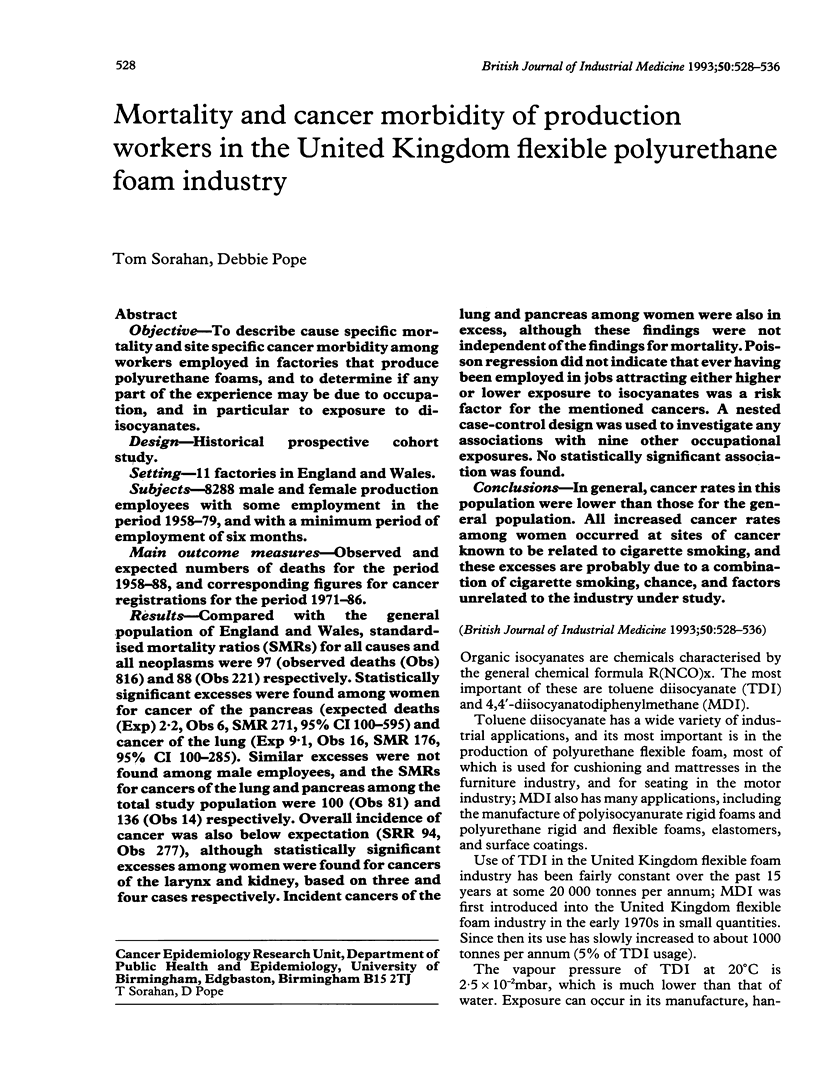
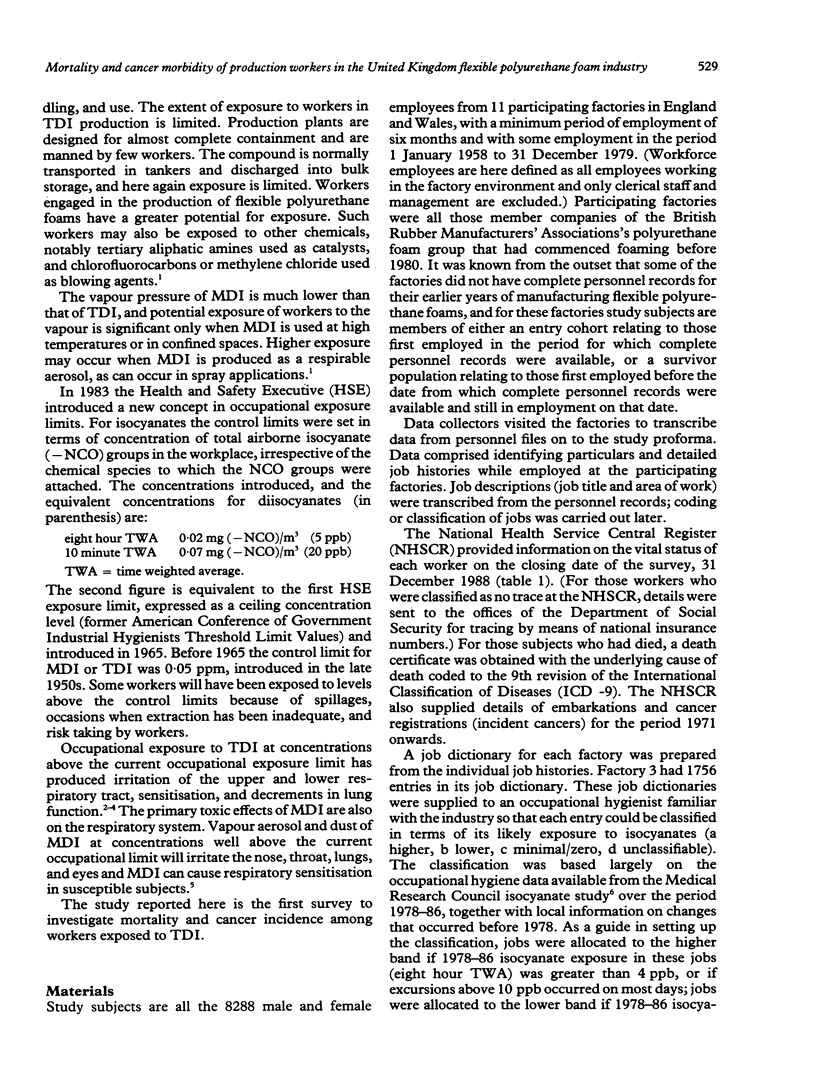
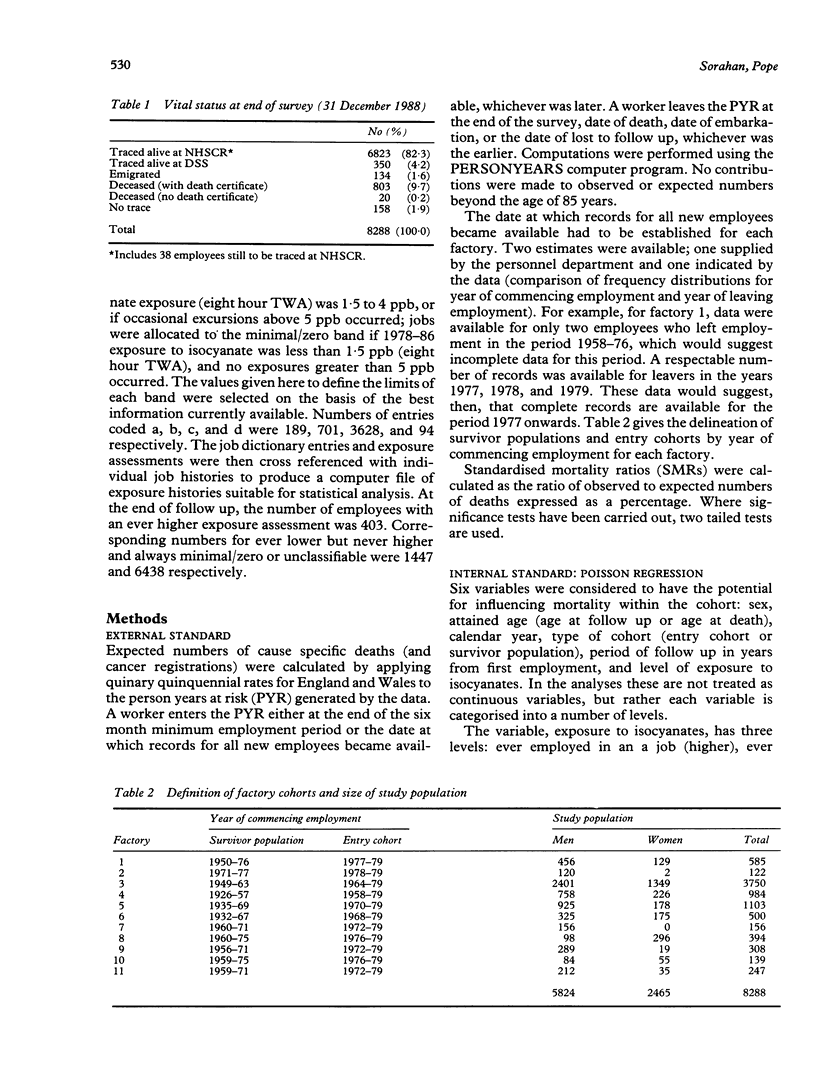
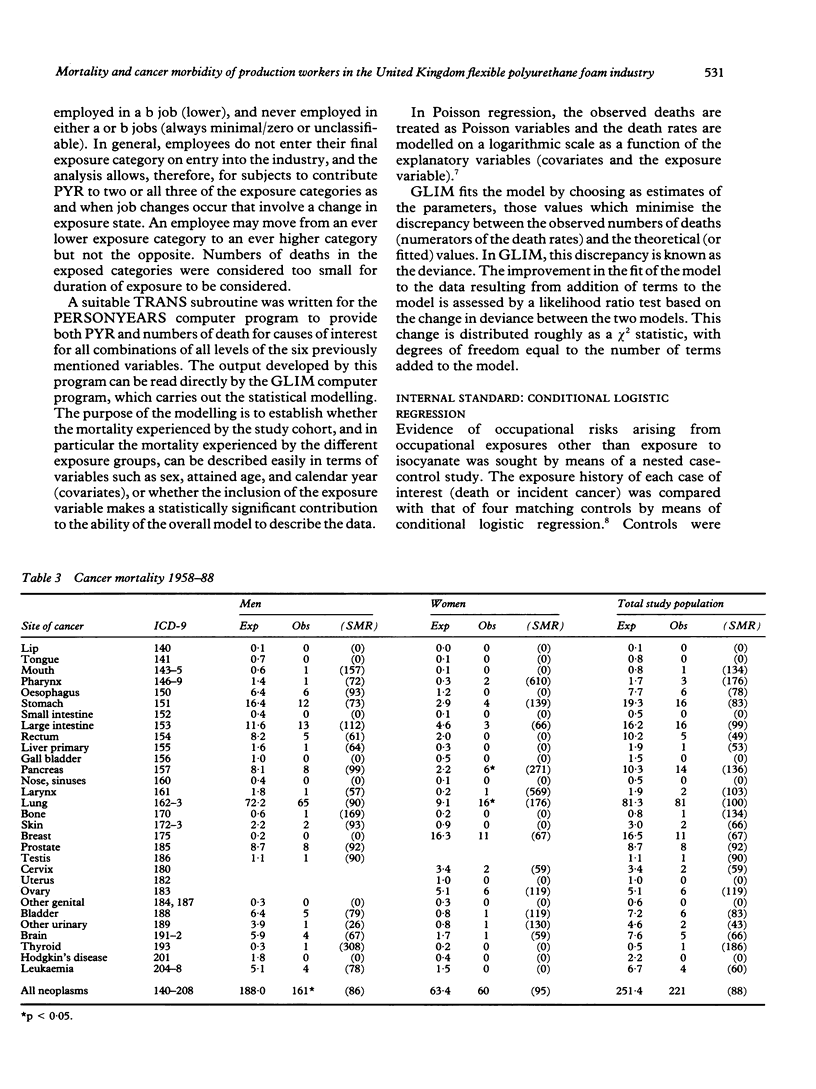
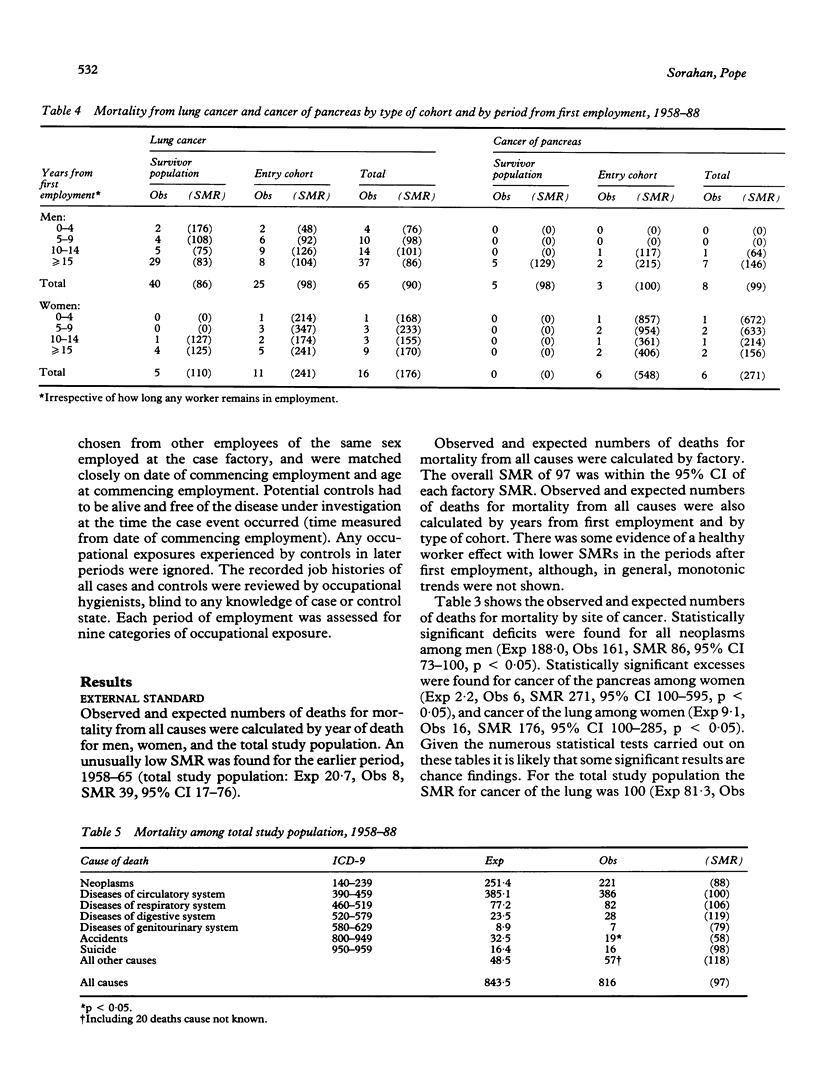
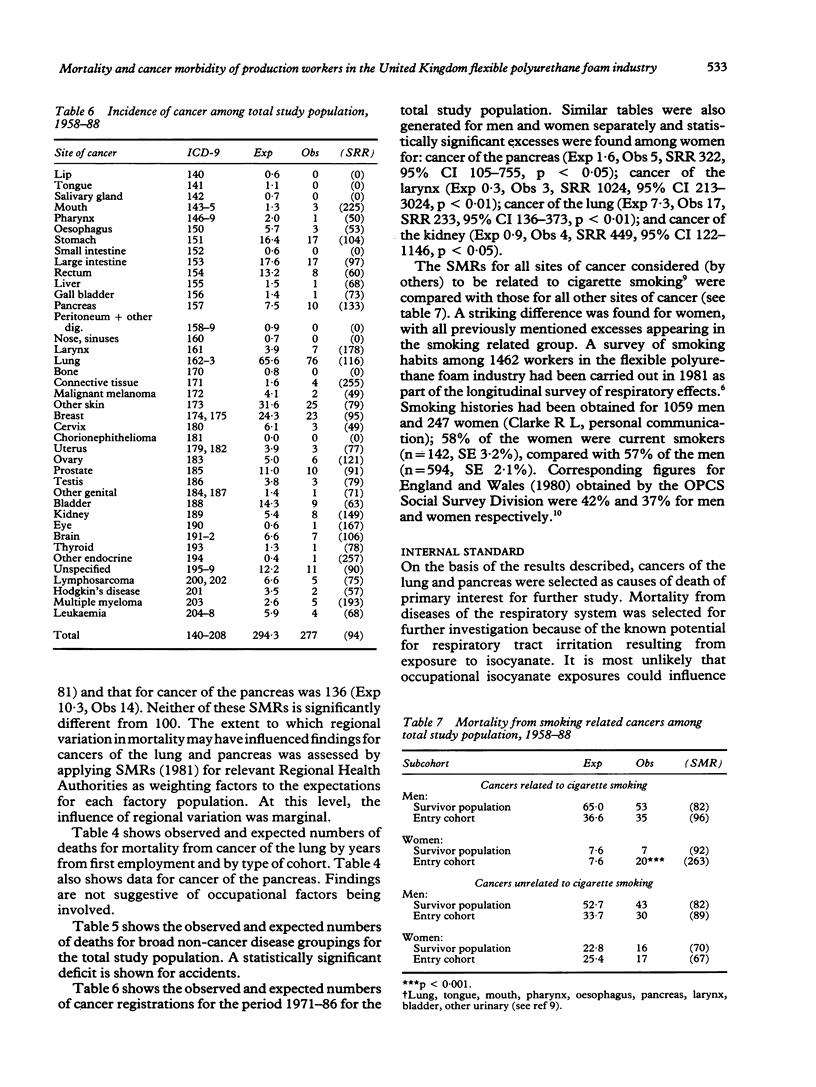
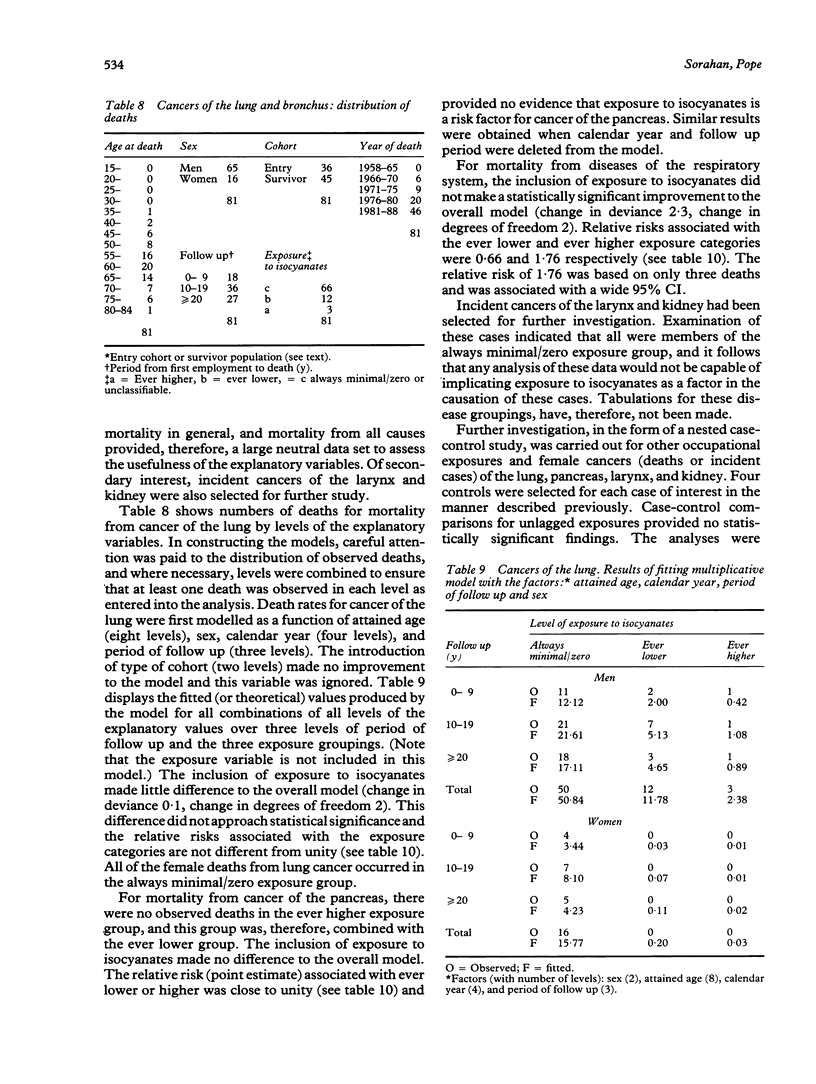


Selected References
These references are in PubMed. This may not be the complete list of references from this article.
- Wegman D. H., Peters J. M., Pagnotto L., Fine L. J. Chronic pulmonary function loss from exposure to toluene diisocyanate. Br J Ind Med. 1977 Aug;34(3):196–200. doi: 10.1136/oem.34.3.196. [DOI] [PMC free article] [PubMed] [Google Scholar]
- Weill H., Salvaggio J., Neilson A., Butcher B., Ziskind M. Respiratory effects in toluene diisocyanate manufacture: a multidisciplinary approach. Environ Health Perspect. 1975 Jun;11:101–108. doi: 10.1289/ehp.7511101. [DOI] [PMC free article] [PubMed] [Google Scholar]
- Weyel D. A., Schaffer R. B. Pulmonary and sensory irritation of diphenylmethane-4,4'- and dicyclohexylmethane-4,4'-diisocyanate. Toxicol Appl Pharmacol. 1985 Mar 15;77(3):427–433. doi: 10.1016/0041-008x(85)90182-6. [DOI] [PubMed] [Google Scholar]


